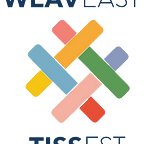Written by Lynne McCarron, (WeavEast Fellow Nova Scotia)
Originally published on September 9, 2019, on weaveast.com
Community looked very different when I was a child than it does today. School and church were within 2km, I walked to school, to Girl Guides, to choir practice and piano lessons. If it was raining, one of the neighbors would gather everyone into the back of a van or a station wagon and take all 10–15 of us where we needed to go (no seatbelts back then… I know, I’m dating myself lol). The rural kids took a school bus, but the city kids used public transit to get to school, or wherever they needed to go.
My same neighbourhood no longer even has a school or a church! Cars can only transport 5–7 people and children in the city are no longer using public transit to get to school — growing up without a sense for the ease and convenience of the public transit system.
What does that mean for our Cape Breton children today? Partners I work with at the United Way are telling us that it there is a loss of connection to community experienced by families without the financial resources to afford a car. This is made worse by the social stigma attached to our public transit system as well, which makes overcoming the barrier even more challenging for families with no alternative means of transportation. Young adults, who have never taken a bus before are intimidated by the process: How will I know where to get off? How will I pay & how much is it? All of this contributes to a pattern of behaviour that we seem to be locked in for the foreseeable future.
We thought it was important for children and youth to feel part of their community, to feel supported and embraced as the future of our communities, so we partnered with a number of businesses and organizations to make that happen.
With funding support from the Telus Community Fund and in-kind support from Transit Cape Breton we did a six month pilot project building our communities and connecting our youth. Once a month, using public transit we took kids from six different communities (from outlying areas) to events in Sydney. Once a month we would partner with the organizers to provide admission to these events: a major junior hockey game, a professional basketball game, a live theatre show, the Scotties curling event, bowling, and Cape Breton University tour. We found leaders who were willing to chaperone the kids, some organized youth groups, and others simply found a champion in their community to make this all come together.
It was a fantastic opportunity for our children and youth to become part of our community, to feel valued by our community. It was also a great opportunity for local business owners to contribute to this program. It is our hope to make this an ongoing opportunity for kids to feel like they matter, that they are a valued part of our communities.
But what did we learn from this Pilot? That the situation of children living in poverty is so multi-faceted that when you control for only one factor, you may actually miss the target. In taking these kids on public transit to community events, we still needed other adults involved. Someone had to communicate to the kids what was going on, we needed chaperones at the various venues, we needed adults to make sure that they got to and from the bus. While we controlled for the expense of the events and the transportation, we made an assumption that all those resources were in place to support the needs of these kids leading up to and following the events. Unfortunately, the children in most desperate need of our services, those without easy access to a youth group or mentor or other means of support, are still unable to access these resources. By opening up access during this pilot we uncovered another gap. Like peeling an onion, the layers of the impact of poverty are unravelling for us in a larger way now. Ultimately, as we have become aware of the problem, we are back to the drawing board to find solutions that will lead to systems-level change.
But as Will Mcavoy says “The first step in solving a problem is recognizing there is one”.
0 Likes
Share
